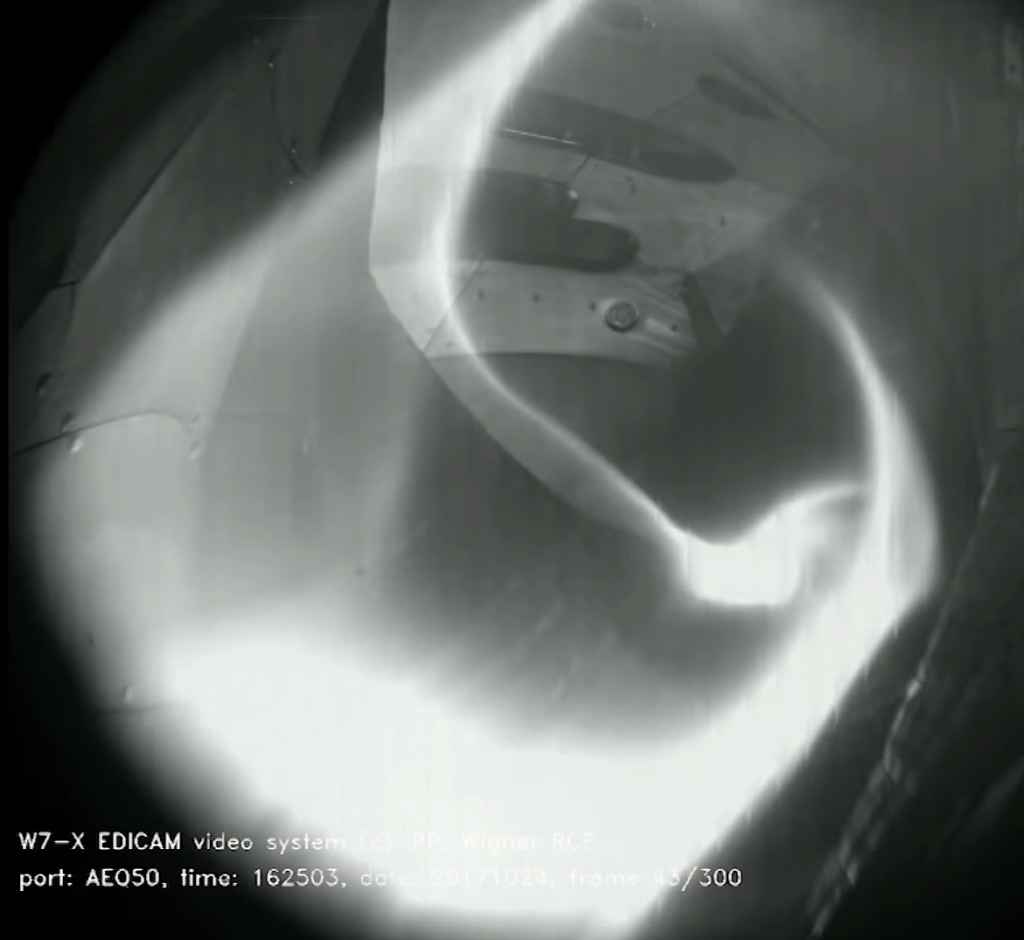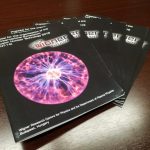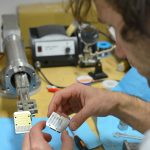Angela Merkel started the first experiments over one and a half year ago, which were continued in this September after a longer shutdown and development period at Wendelstein 7-X (W7-X). The fusion research groups at the Plasma Physics Department of the Wigner Research Centre for Physics of the Hungarian Academy of Sciences (HAS Winger RCP) did not stand idle during this one-year-long period of reconstruction. The video diagnostic system developed by the HAS Wigner RCP and operated jointly with the Max-Planck-Institut für Plasmaphysik broadcasted the first pictures of the events in the stellarator.
On the video below we can see interesting plasma videos recorded by the video diagnostic system.
The Hungarian physicists and engineers prepared several developments and a new diagnostic for this recent three-months-long campaign, while the device itself has gone through an immense transformation as well. A temporary divertor was built in, serving the gas transport between the plasma and the environment. W7-X is capable of producing higher energy and even longer plasma discharges with this feature. There were thirty second long discharges, in contrast to the seven-and-a-half seconds long ones last year, and the aim is one hundred seconds next year. The final aim is thirty-minutes–long plasmas and even higher energy operation, after the installation of the actively cooled divertor.
The Pellet and video diagnostic group of the Plasma Physics Department of the HAS Wigner RCP has developed and built the eye of the stellarator, the camera system, which is now extended with another ultra-fast camera, capable of making one million pictures per second. In addition, the existing intelligent fast cameras “got smarter”: they got new updates, to be able to make more detailed measurements of the processes in the device. Detecting and recording these processes is very important to protect the device, which is the main task of the camera system. Thanks to special camera views and unique processing solutions, the entire interior of the stellarator is monitored by the system so it can carry out security tasks in the long run, in addition to experimental measurements.
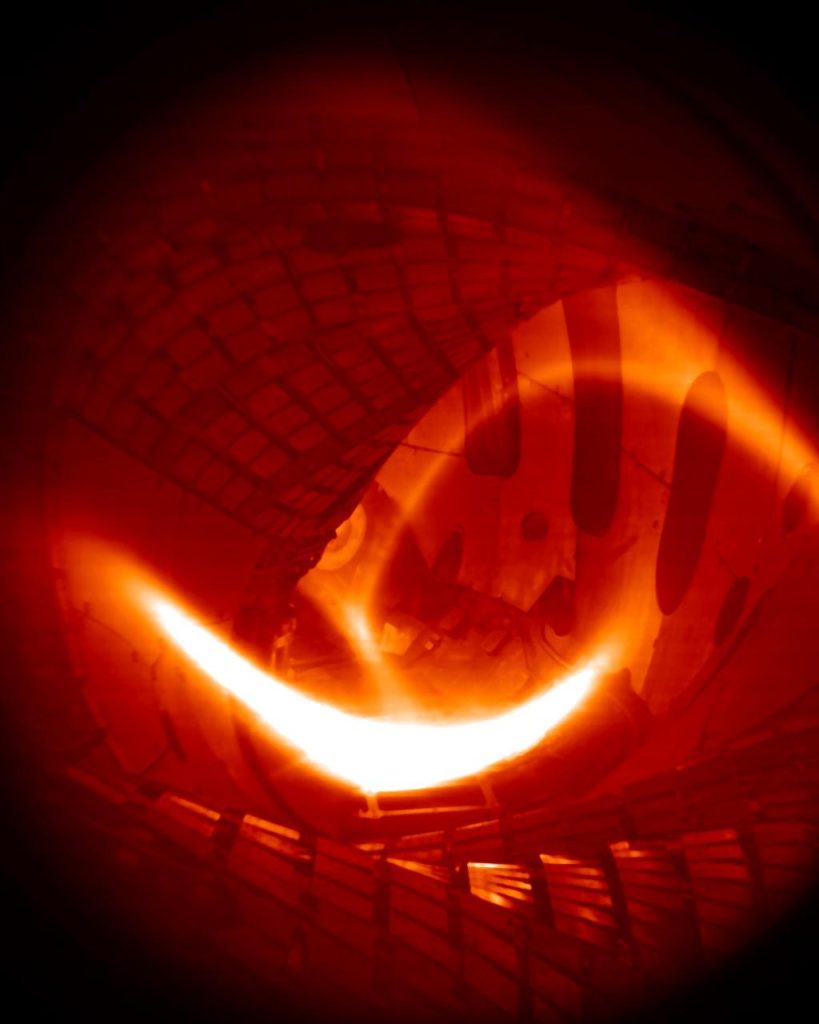
The first hydrogen plasma of W7-X captured by the hungarian video diagnostics
Compared to the previous experimental period, the system has now collected approximately two and a half times more data, representing roughly ten terabytes of pictures and videos. This is still far from when cameras will need to work for half an hour continuously, namely one camera will be capable of generating one and a half terabytes of data on its own.
So-called pellets were injected into the upgraded stellarator device for the first time; these are small, few degrees Kelvin temperature Hydrogen ice pieces. They will feed the plasma at a later fusion power plant. Pellets, flying at a few hundred meters per second speed, were first observed by the Hungarian cameras on W7-X.
The system was delivered and assembled by the Hungarian researchers and engineers in several steps. After the on-site assembly, the system was under continuous testing and development, up to the very first experiments. Of course, the development did not cease then, since the functionality of the controller and data processing software has been continuously adapted to the ongoing experiments.
The other Hungarian equipment, the Alkali Atomic Beam Diagnostics, was developed and delivered by the Beam Emission Spectroscopy Group of the HAS Winger RCP in the spring to W7-X, then assembled for the first time at the beginning of summer and then installed on the stellarator. The device injects a high-energy Sodium beam into the plasma. The atoms of the beam are excited during the collision with the plasma electrons and emit light from which the density of the plasma and the vortexes in it can be calculated. A high-sensitivity optics and detector system has been developed to measure this light emission.
Since then, there has been continuous on-site work by physicists and engineers so that the first beam can be traced to the plasma, well before the original deadline. In the picture below, on the left side there is a beam in the lab, and on the right side you can see the beam in the plasma.
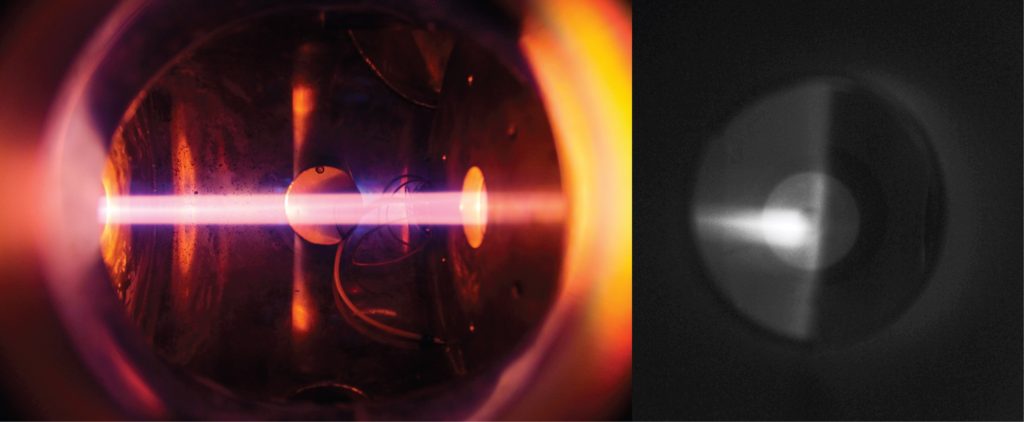
On the right: beam in the lab, on the left: beam in plasma
Of course, the beam is not fading to black and white within the plasma, but in fusion research monochrome cameras with interference filters are used to filter out the disturbing background light, while there is the opportunity to capture many things with a color camera in the lab.
Wendelstein 7-X will be halted for half a year now due to further improvements, to produce longer and more advanced plasma discharges in the new campaign, coming up next summer. Of course, the Hungarian team is not idle during this time, since the video and the atomic beam diagnostics has to be prepared for the new challenges.
